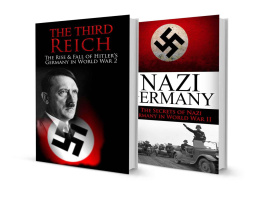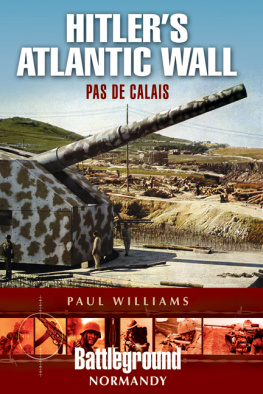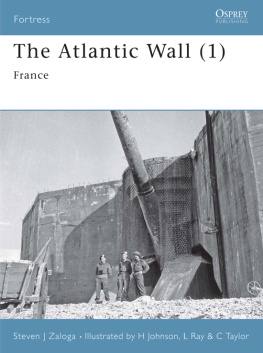SMASHING HITLERS ATLANTIC WALL
THE DESTRUCTION OF THE NAZI
COASTAL FORTRESSES
PATRICK DELAFORCE
All Rights Reserved
Copyright Patrick Delaforce 2001, 2016
First published in 2001 by Cassell and Co.
Also published in 2005 by Pen & Sword.
This edition published in 2016 by:
Thistle Publishing
36 Great Smith Street
London
SW1P 3BU
www.thistlepublishing.co.uk
CONTENTS
THE MAPS
INTRODUCTION
THE CINDERELLA WAR
T he Five Years Of Global warfare during World War Two can be likened to a three-dimensional deadly game of chess. The killing fields were on the beaches, in the bocage, swamps and polders, and terrible battles took place in the air, and on and under the sea. Many of those campaigns have been well documented, but this book is about a crucial series of battles rarely chronicled. Prime Minister Winston Churchill and the Fhrer, Adolf Hitler, were both agreed on the final chess move and where (but not when) it would take place.
After the launch of Operation Barbarossa, the unexpected invasion of Russia in June 1941, Hitler knew with absolute certainty that his Achilles heel would be the successful opening up of the Second Front in Western Europe. He and Winston Churchill both knew that a successful attack and lodgement (requiring one or two larger ports in good working order) by the Allied armies on the western flank would eventually spell the end of the Third Reich. Despite the enormous manpower available to the Axis armies (including press-ganged Russian, Hungarian, French, Dutch and Belgians), they could not hope to win the war fighting the Russian hordes in the east and the Allied armies in the west. On the eastern front Hitler launched his Panzer armiesthe bishops and knights of his chessboard. On the western front he created a dozen or more powerful fortresses, castles, to defend his vulnerable major ports and harbours. Hitlers secret edicts by which he created the Atlantic Wall, are detailed in this book. In the winter of 1941 the vast Todt organization (mainly slave labour) were tasked by the Fhrer to build the long line of some 1,500 steel and concrete defensive strongpointsspread over four country coastlinesDenmark, Holland, Belgium and, most vitally, in France.
According to size, the strongpoints were called Widerstansnest, Sttzpunkt, Blockhaus, and Verteidigungs Bereiche. Hitler realised he was powerless to prevent raids by the pawns on the chessboard but he intended that his fortresses (Festung) would defend and dominate the vital ports and, by total destruction, deny them to his enemies. He personally supervised the detailed plans for their defences; the amount and quality of the concrete and steel required; the type and number of guns (German, French, Belgian, Czech, Russian, Yugoslav or British) needed for their defence. (He switched Panther tanks from the Russian front to be integrated into the defensive rings of strongpoints in the west). He personally selected the (usually) dedicated fortress commandants, met them face to face, briefed them about their duties and made them swear an oath of allegiance to him, their Fhrer and to the Third Reich. They had to promise to fight to the last man and the last stone of the defence walls!
Should the worst come to the worst, the commandants were ordered to oversee the total destruction of their port and wreck all the harbour facilities, leaving deadly mines hidden in the water and sunken ships blocking the entrance. On several occasions he sent Iron Crosses to heavily beleaguered commandants to issue to key defenders. He maintained direct radio control and issued them with (often unnecessary) orders. This book details the key secret edicts which promulgated the precise rules of engagement and the responsibilities of each fortress commandant. His trusted generals and advisers also give their viewpoints: Walther Warlimont, Blumentritt, Jodl, Rommel and also Albert Speer, his close friend, architect, city planner and head of the huge Todt construction organization (from 1942).
The opening of the Second FrontOperation Overlordin June 1944 was probably one of the most dramatic events of the twentieth century. Brilliant planning and intense co-operation between the American, British and Canadian armed forces on sea, land and in the air produced, eventually, a stunning victory. A year later, the Allied forces met the Russian armies on the Baltic, Berlin had been captured and the Third Reich was finished. And Adolf Hitler, the Fhrer, committed suicide. After bitter attritional fighting in Normandy during June and July 1944, the Allied armies broke through the German defences in the notorious killing grounds around Falaise and Argentan. General Patton sent his armour through Brittany towards Paris and Field Marshal Bernard Montgomery unleashed his three armoured divisions in the famous Great Swan to seize Brussels, Antwerp and Ghent.
Many experts were sure that the war would be over by Christmas. Hitlers generals fighting desperate battles on the Russian front still managed to cobble together scores of battlegroups and halt the British in Holland and the Americans in the Metz-Nancy region.
The Allies had far outstripped their coastal supply points. Petrol and ammunition were severely rationed because, quite simply, the fanatical defences of Hitlers dozen fortress-ports had thwarted the Allied plans.
The two secret man-made Mulberry harbours on the Normandy coast had performed superbly and supplied the bridgeheads with everything then needed. Now the front lines were stretched 300 miles away and one, but preferably two, major ports were urgently needed, if the Siegfried line and the Ruhr defences were to be breached.
Just before Operation Market Garden, the famous bridge too far, took place in mid-September, Prime Minister Winston Churchill was writing, This was the end of the great pursuit. For the next few months we could only advance after very hard fighting. Everywhere enemy resistance was stiffening and our supplies had been stretched to the limit. These had to be restored and the forward troops reinforced and replenished for the coming autumn battles. To the Chief of Staffs Committee he wrote on 8 September 1944, Apart from Cherbourg and Arromanches [Mulberry] we have not yet obtained any large harbours. The Germans intend to defend the mouth of the Scheldt and are still resisting in the northern suburbs of Antwerp. Brest has not been taken in spite of very heavy fighting. Lorient still holds out. No attempt has been made to take and clear the port of St Nazaire which is about twice as good as Brest and twice as easy to take. No attempt has been made to get hold of Bordeaux. Unless the situation changes remarkably the Allies will still be short of port accommodation when the equinoctial gales are due.... No one can tell what the future may bring forth. Will the Allies be able to advance in strength through the Siegfried line into Germany during September or will their forces be so limited by supply conditions and the lack of ports as to enable the Germans to consolidate on the Siegfried line?
Although the great commanders made light of it afterwards in their memoirs it was a desperate situation. Besides the very serious lack of supplies, the German secret weapons, V-1s and V-2s were taking a savage toll of life in southeast England. Besides openingcome what maya number of vital ports the Allies were determined to winkle out and subdue the scores of rocket launching sites in northwest France and parts of Holland.
Left behind and almost forgotten in the mad stampede into the Low Countries, American, Canadian and British forces with great support from the RAF/USAAF and the Royal Navy and US Navy, were fighting a score of brutal little battles. On the western flank in Brittany, American forces seized Cherbourg, quickly took St Malo, invested Brest and surrounded Lorient and St Nazaire. (All classified by Hitler as fortressports). On the eastern flank, Canadian and British forces took Rouen, Dieppe, besieged Calais, Boulogne and Dunkirk, and in a classic all-arms attack captured Le Havre. In a bravado armoured dash, British armoured forces captured Antwerp. Beside himself with rage, the Frtrer declared Flushing and the island of Walcheren to be Fortress Scheldt to deny access to Antwerp.


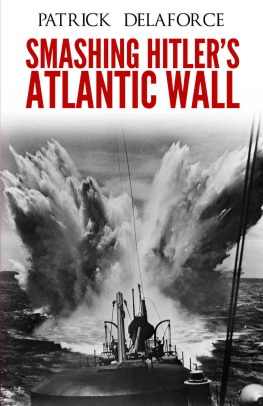
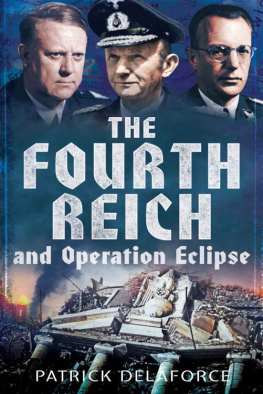

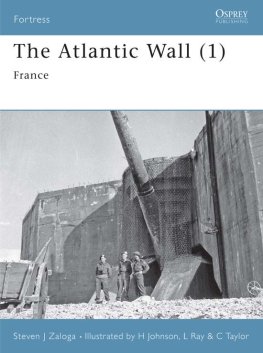


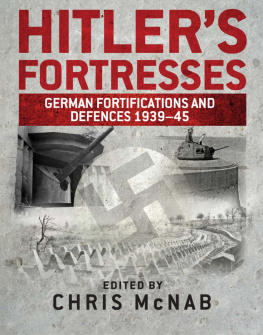

![Russell - Leaping The Atlantic Wall - Army Air Forces Campaigns In Western Europe, 1942-1945 [Illustrated Edition]](/uploads/posts/book/94591/thumbs/russell-leaping-the-atlantic-wall-army-air.jpg)
